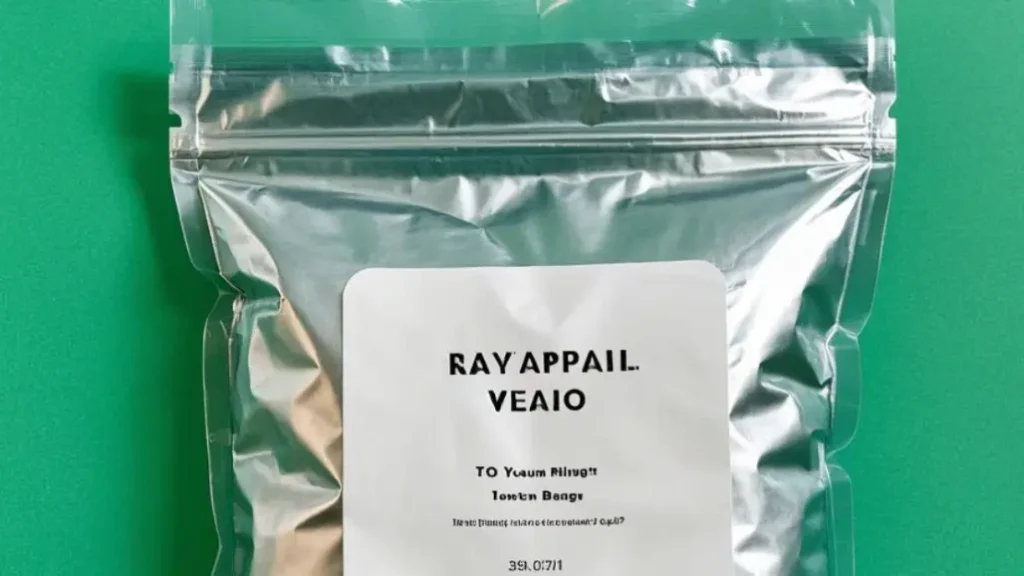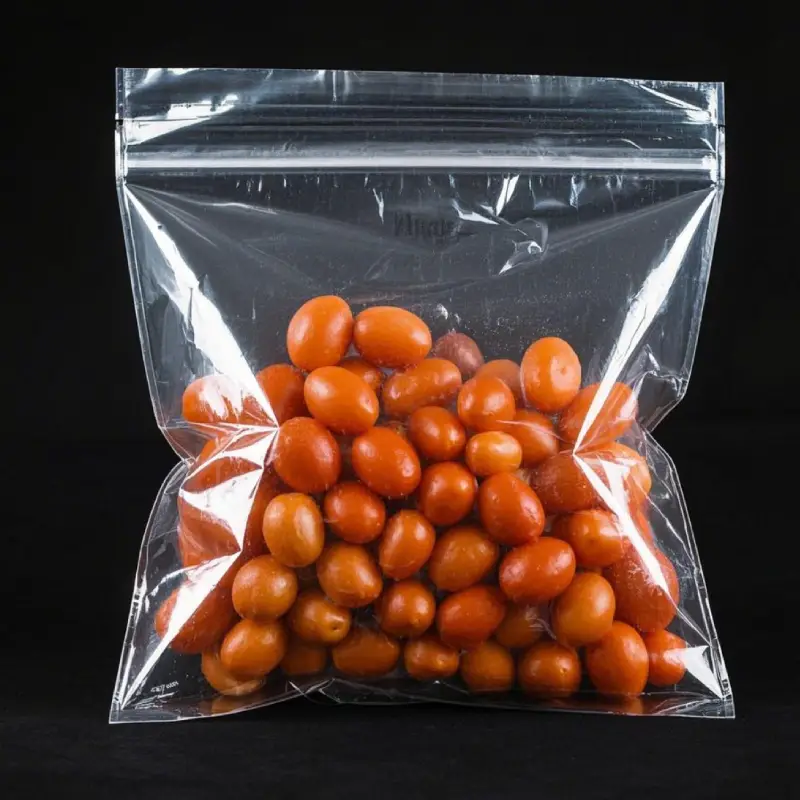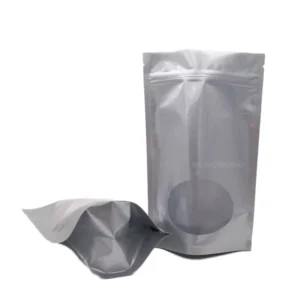Mylar bags are a popular choice for long-term food storage due to their superior ability to block oxygen, moisture, and light. Many people already use vacuum sealers for preserving food, leading to the common question: can you vacuum seal Mylar bags? The answer isn’t a simple yes or no, and understanding the nuances of Mylar bag construction and vacuum sealer functionality is key to successful food preservation.
This blog post will delve into the specifics of vacuum sealing Mylar bags. We’ll explore the types of Mylar bags that are compatible with vacuum sealers, the proper techniques for achieving an airtight seal, and the benefits and potential drawbacks of this method. By understanding these details, you can confidently determine if vacuum sealing Mylar bags is the right choice for your food storage needs.
What Are Mylar Bags
Mylar bags are a type of flexible packaging made from a laminate of several layers of materials, most notably including a thin layer of aluminum foil. This unique construction gives them exceptional properties that make them ideal for long-term storage, particularly for food. They are highly resistant to oxygen, moisture, and light, which are the primary factors that cause food to degrade and spoil over time.
Can You Vacuum Seal Mylar Bags

Can Mylar Bags Be Vacuum Sealed?
Mylar bags are a popular choice for long-term food storage due to their durability and ability to block light and oxygen. However, they can be tricky to vacuum seal. Here’s what you need to know:
1. Standard Vacuum Sealers Won’t Work Most household vacuum sealers, like FoodSavers, are designed for bags with textured surfaces that allow air to be drawn out. Mylar bags are smooth, so these sealers can’t remove the air effectively.
2. Chamber Vacuum Sealers are an Option Chamber vacuum sealers work differently. They evacuate all the air from a chamber, allowing the same pressure to be applied inside and outside the bag. This makes it possible to vacuum seal smooth Mylar bags. However, these sealers are typically more expensive and larger than standard models.
3. Alternative Methods Exist If you don’t have a chamber vacuum sealer, there are a couple of workarounds:
- Nested Method: Place your filled Mylar bag inside a standard vacuum sealer bag, then vacuum and seal the outer bag. This won’t remove all the air from the Mylar bag, but it will protect it from light and some oxygen.
- Snorkel Method: Insert a small strip of a standard vacuum sealer bag into the top of your Mylar bag, creating a channel for the air to be sucked out. This method requires some practice and may not work with all sealers.
4. Consider Oxygen Absorbers Even if you can’t vacuum seal your Mylar bags, using oxygen absorbers is a great way to remove oxygen and extend the shelf life of your food. These small packets absorb oxygen, creating an environment where food can stay fresh for years.
Here are some additional resources that you may find helpful:
- How To Seal Mylar Bags: Using Heat Seal And Vacuum Sealer
- Vacuum Sealing Mylar Bags Using FoodSaver Vacuum Sealers
- The Benefits of Using Mylar Bags & How to Use Them
Can You Vacuum Seal Mylar Bags With Oxygen Absorbers
You absolutely can, and in fact, it’s highly recommended to use oxygen absorbers when storing food in Mylar bags, whether you vacuum seal them or not. Here’s why:
Mylar bags provide a strong barrier against light, moisture, and some oxygen, but they’re not completely impermeable. Over time, some oxygen can still seep in. Oxygen absorbers act as a backup, scavenging any remaining oxygen within the bag to create an environment where food spoilage is drastically reduced.
Even if you manage to achieve a good vacuum seal with a Mylar bag, it’s not a guarantee that all the oxygen is removed. Oxygen absorbers ensure that any residual oxygen is eliminated, maximizing the shelf life of your stored food.
Think of it as a double layer of protection. The Mylar bag provides the initial barrier, while the oxygen absorber acts as a final line of defense against oxygen, ensuring your food stays fresh for long-term storage.
In short, using oxygen absorbers with Mylar bags, whether vacuum sealed or not, is the best way to ensure your food stays fresh and safe for extended periods.
How to Vacuum Seal Mylar Bags

Mylar bags are excellent for long-term food storage, but vacuum sealing them can be tricky. Standard household vacuum sealers often struggle with the smooth surface of Mylar.
Here’s a breakdown of methods, with “Step” added to each part and H3 headings:
Step 1: Understanding the Challenge
Standard vacuum sealers rely on textured bags to create a channel for air removal. Mylar bags are smooth, preventing these sealers from effectively sucking out the air. Therefore, alternative methods are necessary.
Step 2: Chamber Vacuum Sealers (The Ideal Solution)
Chamber vacuum sealers are the most reliable way to vacuum seal Mylar bags. They work by creating a vacuum in a chamber, equalizing pressure inside and outside the bag, allowing for a complete seal. However, these sealers are generally more expensive and bulkier than standard models.
Step 3: The Nested Bag Method (A Workaround)
This method involves placing your filled Mylar bag inside a larger, standard vacuum sealer bag.
- Fill your Mylar bag with the desired food item and leave enough headspace for sealing.
- Carefully place the filled Mylar bag inside a larger, standard vacuum sealer bag.
- Use your standard vacuum sealer to remove the air from the outer bag and seal it. This won’t create a perfect vacuum in the Mylar bag, but it will provide some protection against oxygen and light.
Step 4: The Snorkel Method (Requires Practice)
This method uses a small strip of a standard vacuum sealer bag as a “snorkel” to create an air channel in the Mylar bag.
- Cut a small strip from a standard vacuum sealer bag.
- Insert one end of the strip into the open end of your filled Mylar bag, ensuring it reaches near the bottom. Leave the other end sticking out.
- Position the open end of the Mylar bag (with the snorkel still inserted) in your standard vacuum sealer.
- Use the vacuum sealer to remove the air through the snorkel. Once most of the air is removed, carefully remove the snorkel and quickly seal the Mylar bag. This method requires practice and may not be successful every time.
Step 5: Using Oxygen Absorbers (A Key Supplement)
Regardless of which vacuum sealing method you use (or even if you skip vacuum sealing altogether), oxygen absorbers are highly recommended for long-term food storage in Mylar bags.
- Place the appropriate number of oxygen absorber packets inside the filled Mylar bag before sealing.
- Seal the bag as quickly as possible to minimize the oxygen the absorbers need to process. Oxygen absorbers will remove any remaining oxygen, significantly extending the shelf life of your stored food.
Are Mylar Bags Better Than Vacuum Bags
Mylar bags and vacuum bags are both used for food storage, but they have different strengths and weaknesses. Choosing the right one depends on your specific needs and storage goals.
Mylar bags excel at long-term storage, especially for dry goods. Their opaque, multi-layered construction blocks light, oxygen, and moisture far more effectively than standard vacuum bags. This makes them ideal for preserving the flavor, nutrients, and texture of foods like grains, beans, and dried fruits for years. However, Mylar bags can be more rigid and less flexible than vacuum bags, and they require specialized sealing methods or equipment.
Vacuum bags are more versatile and convenient for everyday use and short-term storage. They’re readily compatible with most household vacuum sealers, making them a good choice for items you’ll use within a few months. Vacuum sealing also helps prevent freezer burn and extends the shelf life of refrigerated foods. However, vacuum bags don’t offer the same level of long-term protection against light and oxygen as Mylar bags, and they may not be as durable.
Ultimately, the best choice depends on your needs. For long-term storage of dry goods, Mylar bags with oxygen absorbers are the clear winner. For everyday use and shorter-term storage, vacuum bags offer greater convenience. Some people even use both, storing frequently accessed portions in vacuum bags and long-term reserves in Mylar bags.
Can Mylar Bags Be Used in a Vacuum Sealer
While it’s technically possible to use Mylar bags with a vacuum sealer, it’s not as straightforward as using standard vacuum bags.
Here’s why:
Standard vacuum sealers, like FoodSavers, are designed to work with bags that have a textured surface. This texture creates channels that allow the air to be sucked out effectively.1 Mylar bags, however, have a smooth surface, which prevents the air from being removed properly by these standard sealers.
That being said, there are a couple of workarounds. One option is to use a chamber vacuum sealer. These machines work by creating a vacuum in a chamber, which equalizes the pressure inside and outside the bag, allowing for a proper seal even with smooth Mylar bags.2 However, chamber vacuum sealers are typically more expensive and bulky than standard models.3 Another option involves using a “snorkel” method or nesting the Mylar bag within a standard vacuum bag, though these methods can be cumbersome and may not provide a perfect seal.
Ultimately, whether or not you can use Mylar bags in a vacuum sealer depends on the type of sealer you have and the method you’re willing to use. If you’re primarily concerned with long-term storage, using oxygen absorbers in conjunction with Mylar bags might be a simpler and more effective solution than trying to vacuum seal them.
Conclusion
While standard Mylar bags aren’t designed for traditional vacuum sealing, specialized textured or embossed Mylar bags are compatible with vacuum sealers. Understanding the difference is key to achieving the best long-term storage results. Choosing the right type of Mylar bag allows you to combine the benefits of vacuum sealing with the superior protection Mylar offers.
If you’re looking for high-quality Mylar bags for your storage needs, especially in bulk, consider partnering with a reputable manufacturer. Wholesale options can provide significant cost savings and ensure you have a consistent supply of reliable bags.
Interested in wholesale Mylar bags? BN Pack offers a wide range of sizes and types, including those compatible with vacuum sealers. Contact us today for a quote and discover how we can meet your bulk packaging needs.

